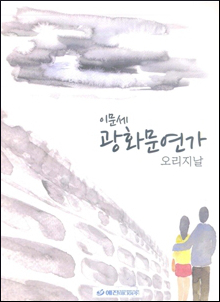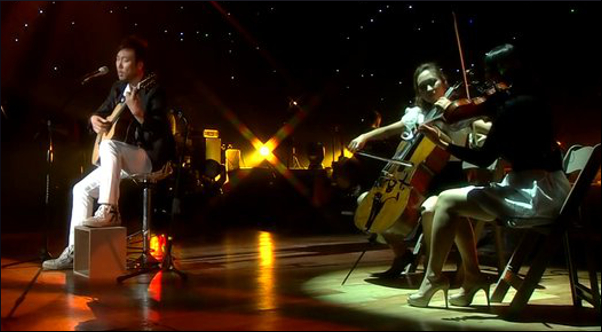
- Gwanghwa-mun Love Song
- Released in: 1988
A classic Korean ballad released in 1988 sung by legendary singer 이문세 (Moon-sae Lee). It substantially upped the popularity of Gwanghwa door, one of the gates into the Gyeongbeok Palace.

A classic Korean ballad released in 1988 sung by legendary singer 이문세 (Moon-sae Lee). It substantially upped the popularity of Gwanghwa door, one of the gates into the Gyeongbeok Palace.

“광화문 연가 / Gwanghwa-mun Yeonga” (Gwanghwa-mun Love Song) is a classic Korean ballad released in 1988 by King Records, sung by legendary singer 이문세 (Moon-sae Lee). It substantially upped the popularity of Gwanghwa-mun (literally, Gwanghwa door), one of the gates into the Gyeongbeok Palace. Gwanghwa-mun is very ornately decorated and serves both as a landmark and as a meeting place for many people. Moon-sae Lee expresses his feelings about a past lover, describing the weather and his surroundings, as he remembers them.
The first landmark mentioned in the lyrics is 덕수궁 돌담길, Deok-su Palace’s rocky patch road. According to an urban myth, if a couple takes a walk down this unfortunate road, they will break up shortly thereafter. Thanks to Moon-sae Lee and his romantic portrayal of this road, it has now left behind its unlucky fame. By singing “아직 남아 있어요” (Are still there), Moon-sae Lee means to say that true love will persevere, no matter what the legends claim.

정동길 (Jeong-dong road) is mentioned next, easily considered the most beautiful road in Seoul. Moon-sae Lee expresses that, even though people have come and gone, and relationships formed and broken, a “조그만 교회당” (small church) still stands. This church, the oldest in Korea, exists in real life and it’s called “정동교회” (Jeong-dong church). Since no other religious references appear in this song, the evocation of this church (which was also probably one of the first western-style buildings in Korea) simply adds more beauty to the imagery.

The last landmark recalled is 광화문 네거리, Gwanghwa-mun’s three-way intersection. Along these roads stand more picturesque spots, like청와대 (The blue house or the president’s residence) and 청계천 (a beautiful stream that runs through Gwanghwa-mun). By drawing mental pictures of the gorgeous places in listeners’ minds, and arguing that Gwanghwa-mun’s beauty never fades (contrary to many relationships), Moon-sae Lee seems to comfort those who miss past lovers, letting them know that some beautiful things never change. If you are planning on visiting Gwanghwa-mun, this song will make you appreciate this landmark that much more.